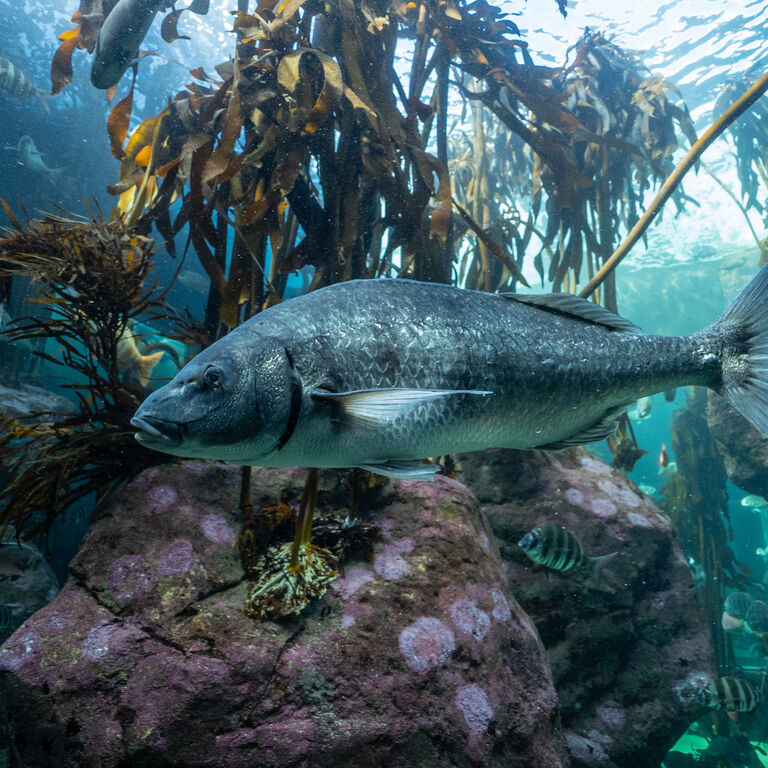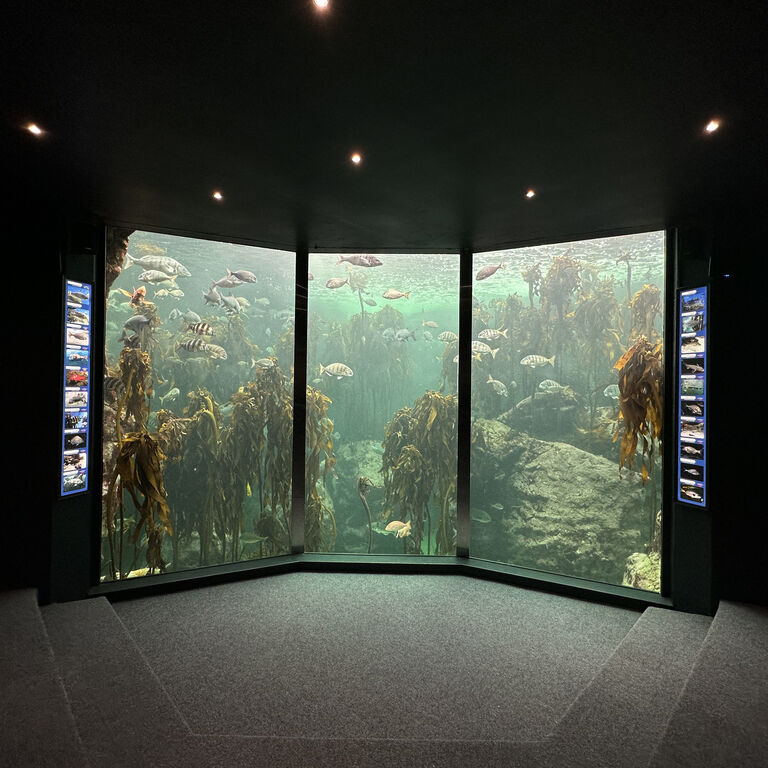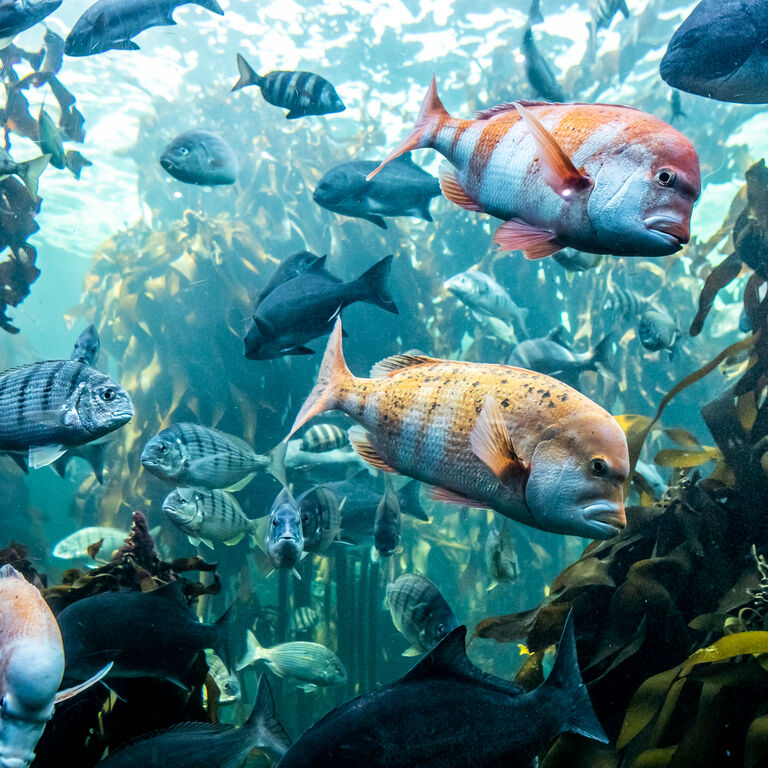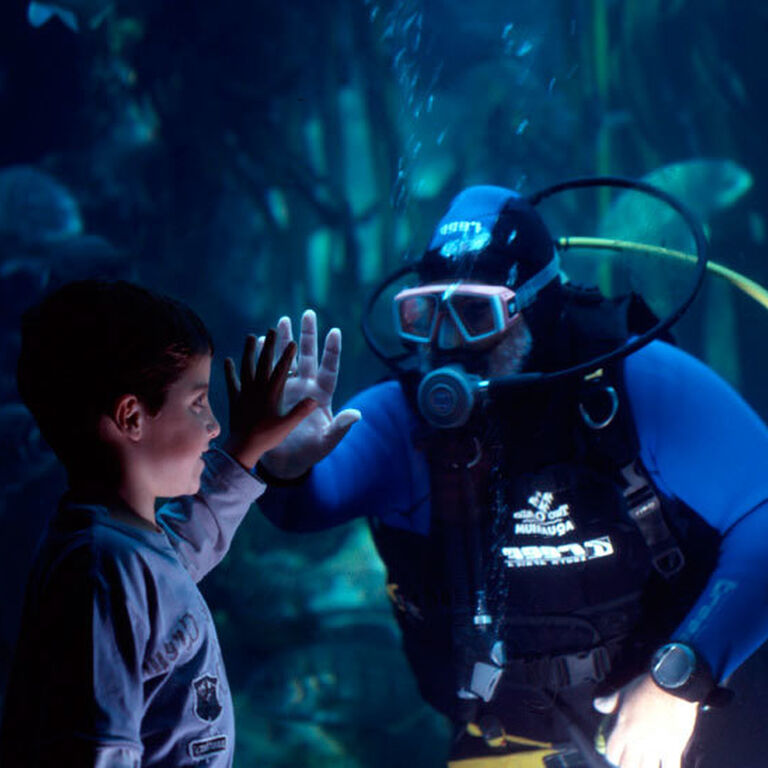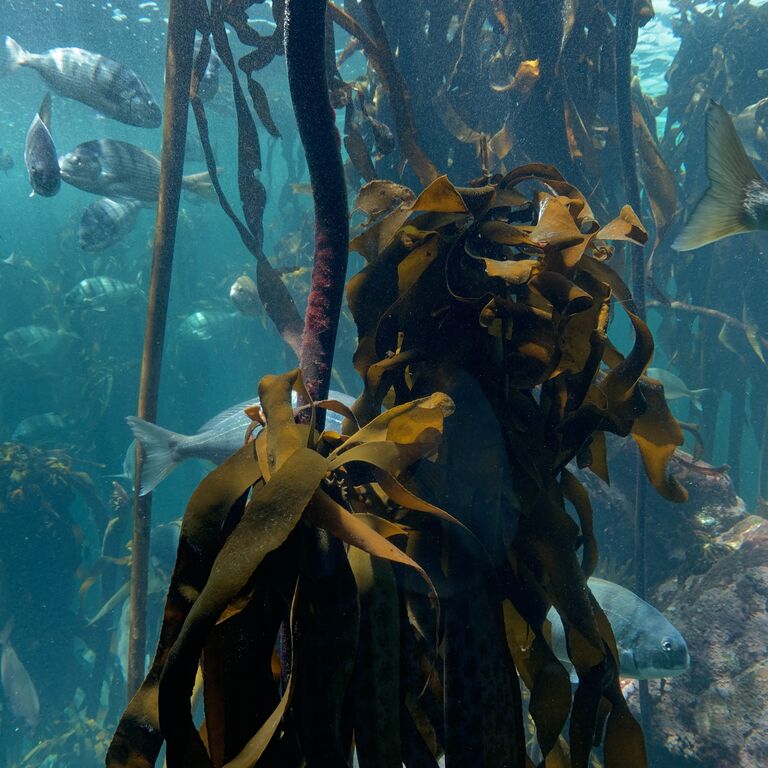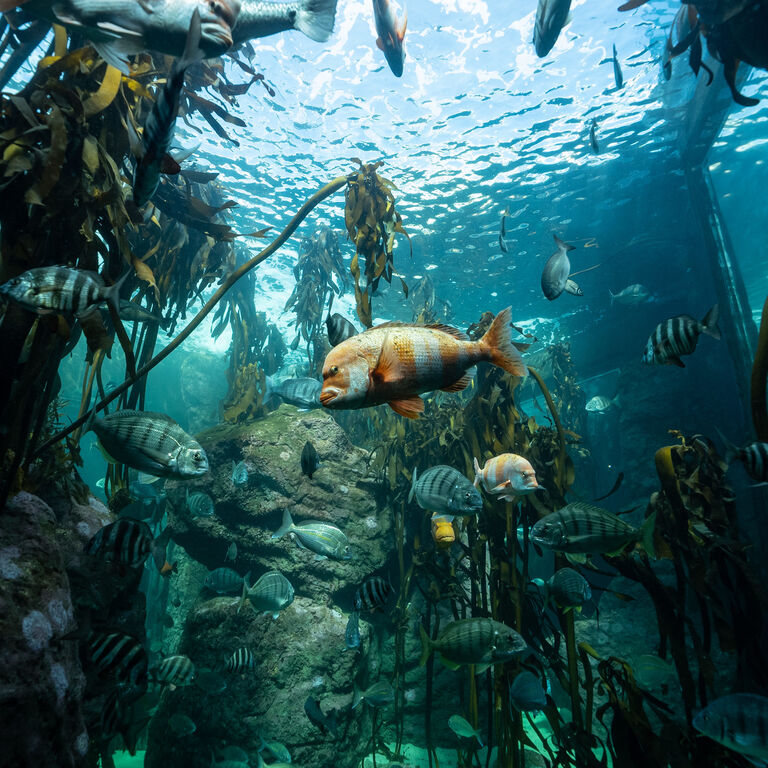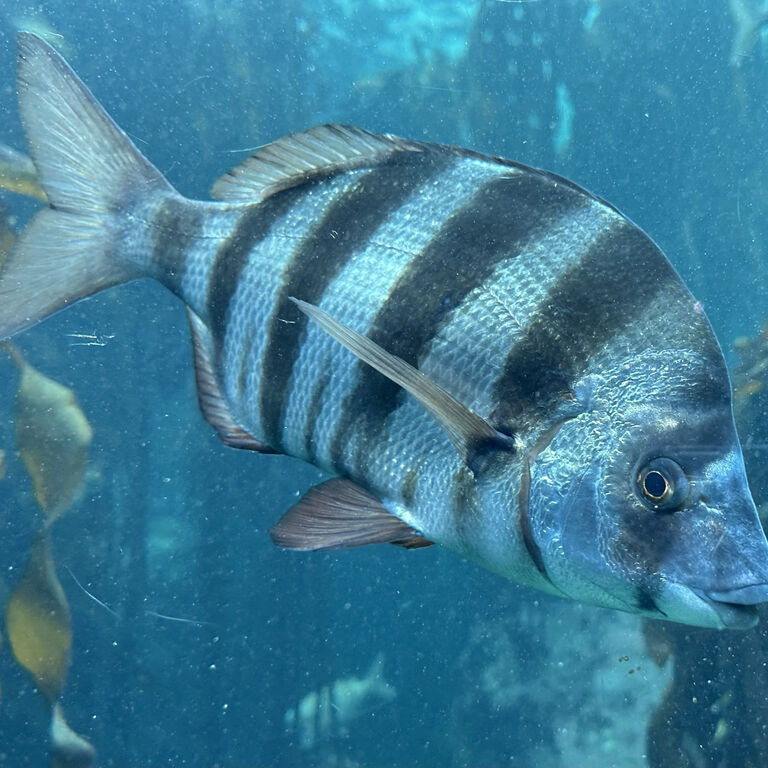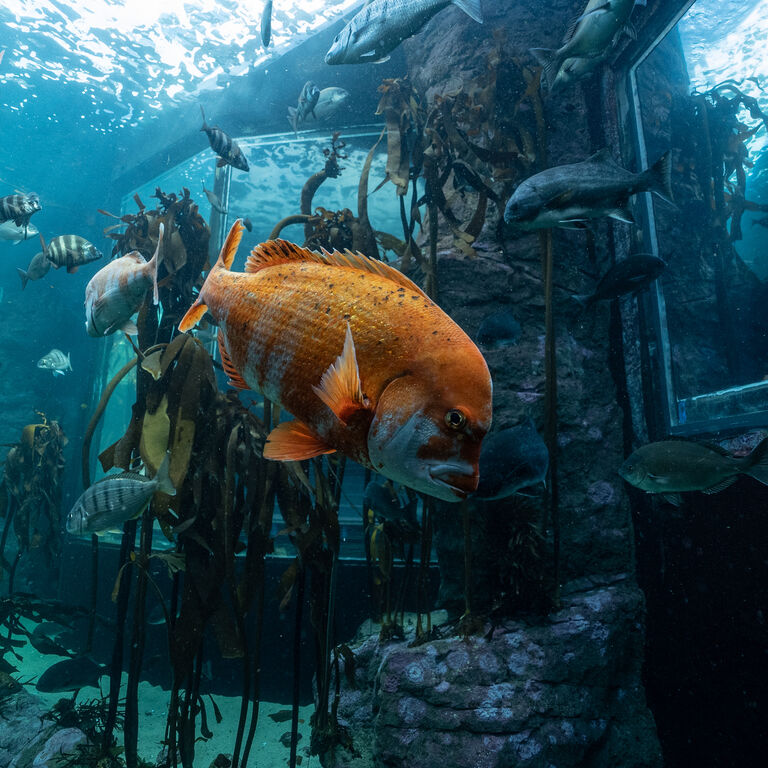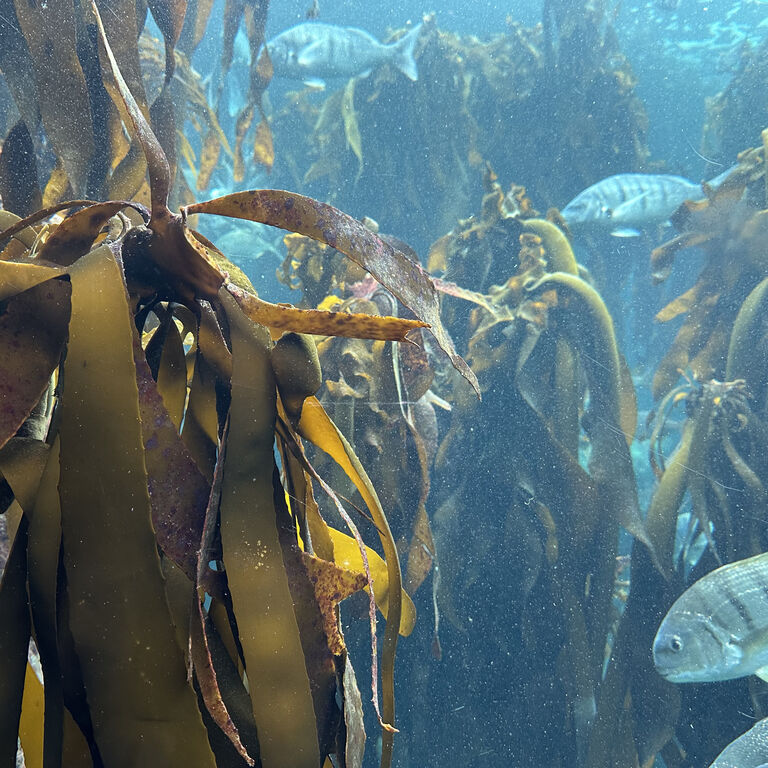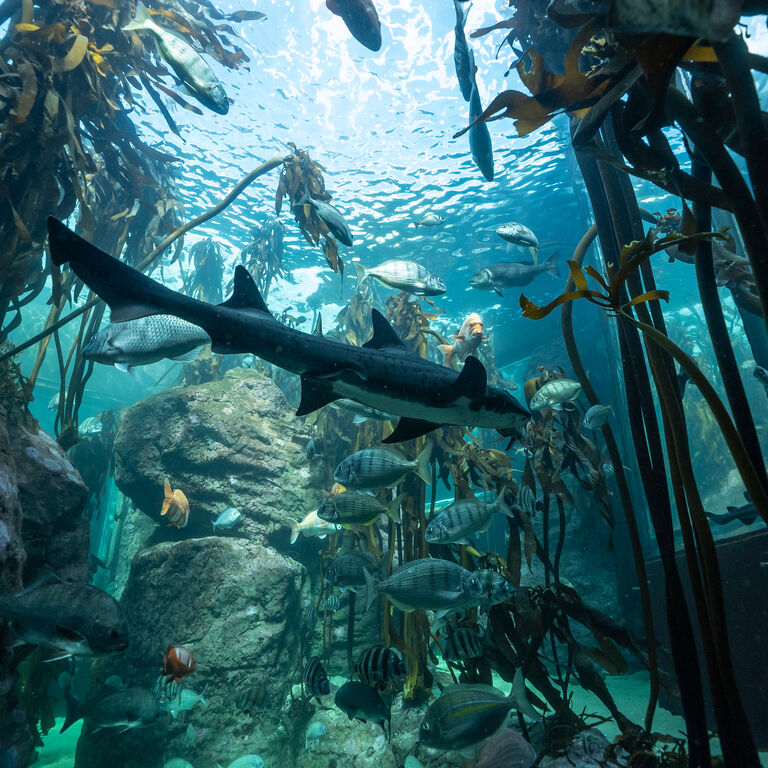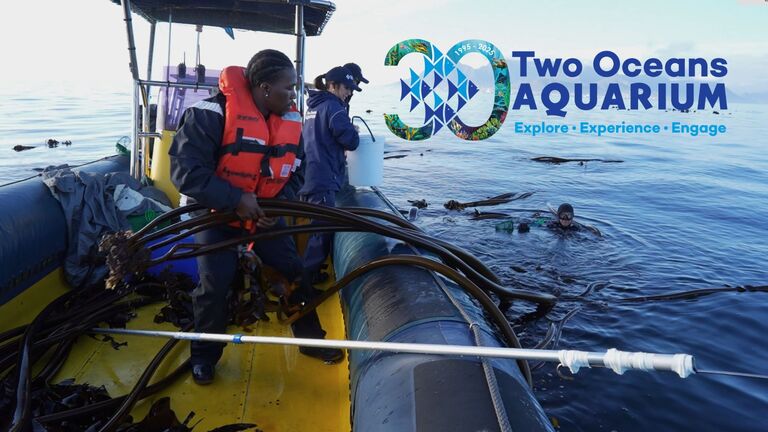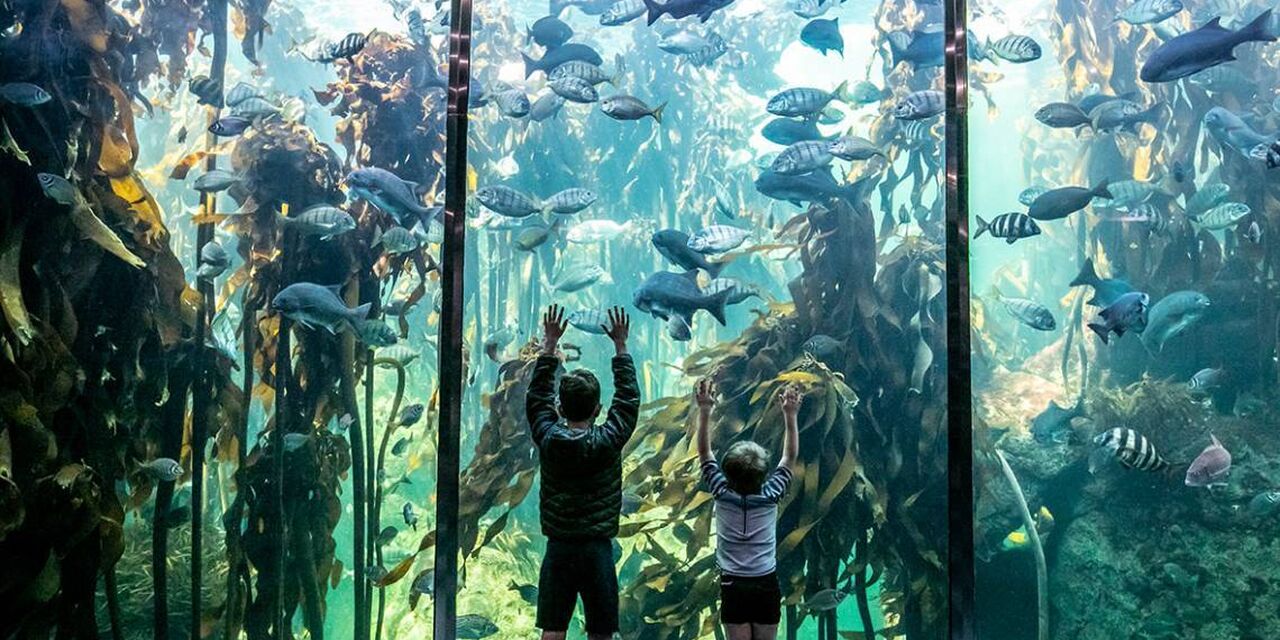
Kelp Forest Exhibit
About
Kelp Forest Exhibit
The Kelp Forest Exhibit is an underwater forest where giant sea bamboo grows like tall trees, fish swim through the algae fronds like birds, while abalone, sea urchins, and rock lobsters feed and take cover among the root-like holdfasts.
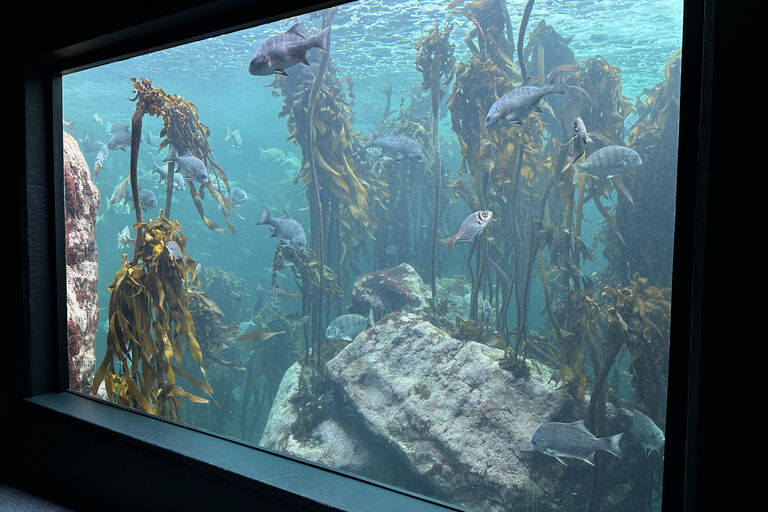
An enchanted underwater forest
Living kelp forests are currently displayed in only a handful of aquariums in the world. Here, three species of giant kelp provide shelter for an array of local fish, which drift amongst the kelp fronds. Our visitors are mesmerised by the hypnotic sway of the tall kelp plants and the play of dappled sunlight on silver fish scales. Central to our "two oceans" theme, this enchanting forest remains one of our biggest drawcards, and many visitors return time and time again to its beauty and tranquillity.
Kelp forests thrive off southern Africa, where the icy Atlantic Ocean washes over rocky and shallow reefs from Cape Agulhas, at the southern tip of Africa, to central Namibia. The southeasterly winds that buffet the Cape Peninsula in summer cause upwellings of rich nutrients from the cold, dark depths of the ocean. These nutrients fertilise the kelp plants, allowing them to grow into giant forests, the canopies of which can be seen from the shore.
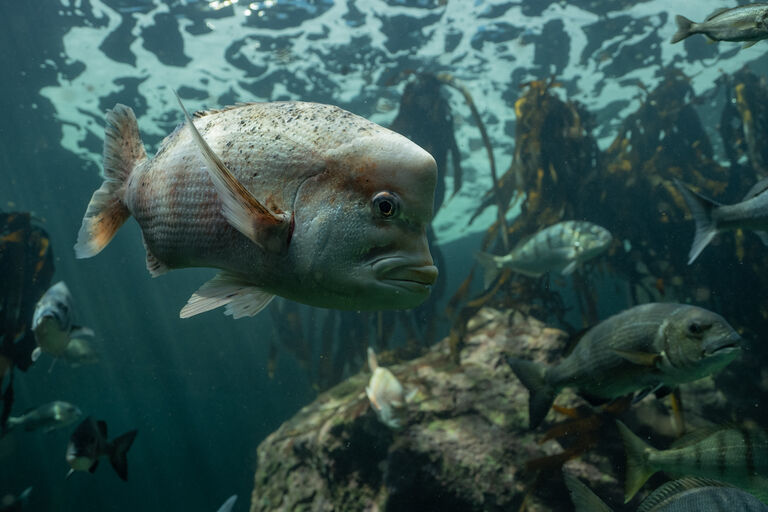
A forest home for fish
South Africa’s kelp forests are home to many fish species found nowhere else in the world. Some fish, such as southern mullet, strepies and hottentots, live permanently in kelp forests where they find food and shelter, while others, such as Cape salmon, giant kob, and even yellowtail, move in and out of kelp forests in search of food.
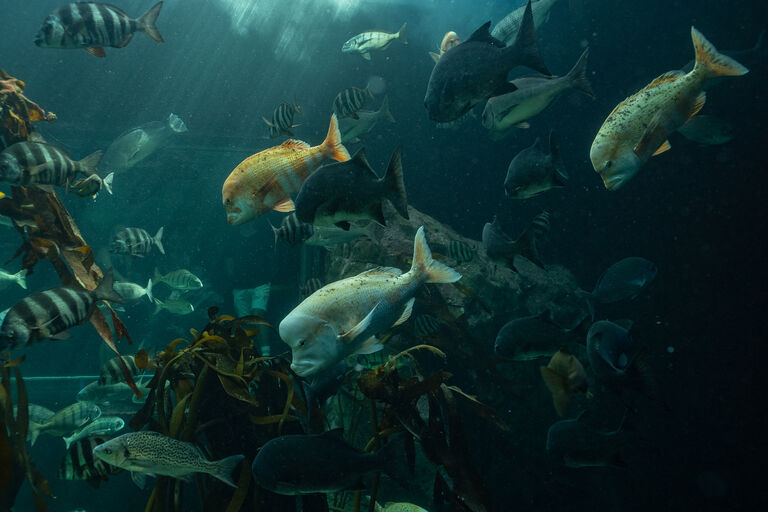
The challenge of growing kelp in an aquarium
Sunlight
This exhibit is open to the sky, so the kelp can receive sunlight to photosynthesise. We have also added strong lights over the exhibit to increase the amount of light during overcast days and in winter when the sun is lower in the sky.
Cool temperature
The water temperature in this exhibit is kept between 12 and 15°C to ensure optimum growth. This is a challenge in summer, especially when the Cape experiences unusual heat waves. We have installed large chillers to keep the water temperature within a suitable range.
Wave action and water movement
Kelp plants receive their nutrients from upwelling. The southeasterly wind, which buffets the Cape Peninsula in summer, blows surface water away from the coastline, allowing icy-cold water from the ocean depths to replace it. Wave action and water movement are vital for kelp growth, stirring up nutrients and enabling the plants to absorb these nutrients. We have installed three systems to increase water movement and nutrient circulation in the Kelp Forest Exhibit. A plunger creates a surge, while a streamer pump delivers approximately 70 000 litres of water per hour to create circular water movement. "Dump boxes" tip large volumes of water into the exhibit at intervals, which stirs up nutrients.
A giant water purifier
Kelp plants thrive on waste products (ammonia, for example) produced by fish. Together with the biofilter (aerobic bacteria living in the sub-gravel filter of the exhibit), the kelp purifies the water. As a result, the Kelp Forest Exhibit has the best water quality in the Aquarium. We use the Kelp Forest Exhibit as a water purifier when algal blooms in the harbour die, turning the water toxic (anaerobic). When this happens, we reduce the amount of water we pump from the harbour and pass it through the Kelp Forest Exhibit before distributing it to our smaller exhibits.
Collecting kelp at sea
Kelp grows incredibly fast and must be replaced regularly. Our Collections team collect kelp from the rocky reefs off Robben Island and Bantry Bay. Divers carefully remove the kelp holdfasts from the rock and swim the plants to the boat. Once on the boat, the plants are placed in a specially designed fibreglass box to keep them wet and cool. Up to 15 plants are collected and transported back to the Aquarium, where the divers tie them down to rocks in the exhibit.
